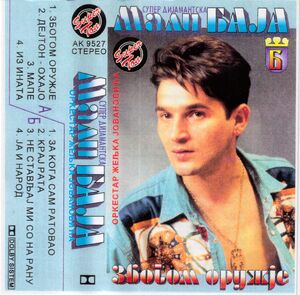Identifying fakes
With cassette piracy being rampant in the 80s and 90s, it would only make sense if it played a big role in the hyperinflated and sanctioned Yugoslavia.
This article aims to showcase ways on how to identify pirated media from that time, as it was very widespread and sometimes even pulled off well. Im going to primarily talk about cassettes but the same things can be applied to CD's as well
Cover
The easiest step in identifying a fake cassette is also the first thing you see, the cover.
The most obvious indication is the colors of the print, they will either be washed out and very pale or extremely vibrant and bright. In any case, the blacks will have a very distinct shine to them. In some cases, the color will be missing entirely and it will be a classic black and white cover, or a different consistant color depending on the color of the paper its printed on.
A lot of times, fine lines will appear very blurry, this can be best seen on letters and graphics, but also pictures of the artists turn blurry.
Since these J-Cards were cut by hand most of the time, its not rare to see white edges where the graphic stops and the opposite, where the picture cuts prematurely or the J-Card is straight up too small or too big for the case.
The last obvious indicator is when the design of the cover changes, whether the entire back, a spine or a simple typeface.

